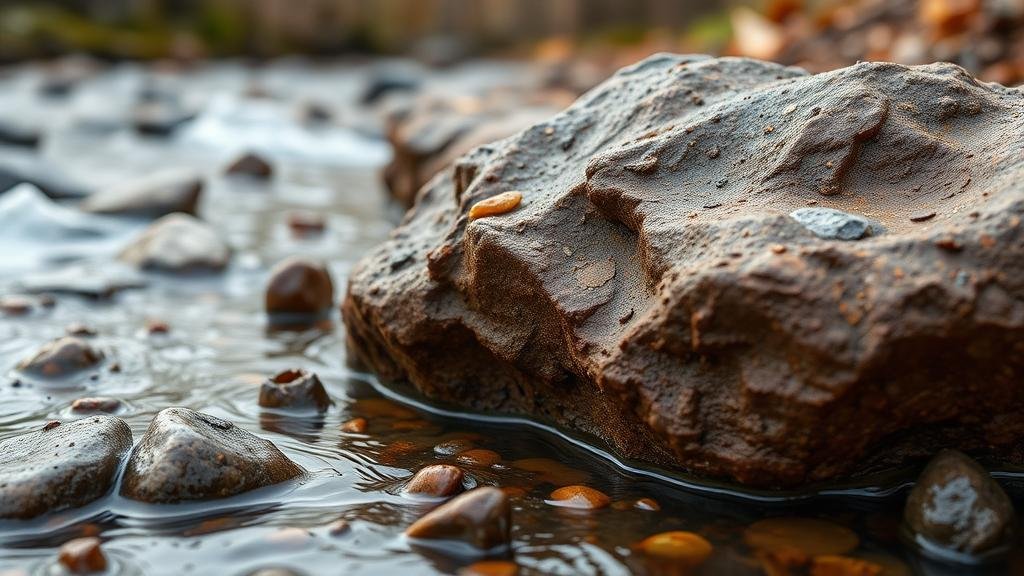Techniques for Recovering Gold From Clay Deposits in Ancient Streams
Techniques for Recovering Gold From Clay Deposits in Ancient Streams
The recovery of gold from clay deposits in ancient streams presents unique challenges and opportunities for modern mining techniques. These deposits, often formed through natural processes like erosion and sedimentation, can hide substantial amounts of gold, making their extraction valuable. This article will explore various techniques used in this process, supported by examples and historical context.
Understanding Clay Deposits
Clay deposits in ancient streams typically consist of fine particles that have settled over time. e particles can contain various minerals, including gold. Understanding the geochemistry of clay is crucial for developing efficient recovery techniques. Gold occurs in two main forms within these deposits: as free gold and as gold bonds with other minerals.
Traditional Panning Techniques
Panning is one of the oldest techniques for recovering gold from stream deposits. This method involves the following steps:
- Collecting sediment: Miners scoop up clay and sediment from the stream bed.
- Washing: The mixture is placed in a pan filled with water and shaken, allowing the heavier gold particles to separate from lighter materials.
- Extraction: The gold is then collected from the bottom of the pan.
Historical accounts indicate that this rudimentary method has helped recover gold from numerous ancient streams, exemplifying its effectiveness even in challenging conditions.
Hydraulic Mining Techniques
Hydraulic mining utilizes high-pressure water jets to dislodge clay deposits, allowing for a more efficient extraction process. This technique is particularly advantageous in large-scale operations. It involves:
- Creating a water source: Water is directed through hoses to create high-pressure jets.
- Erosion of clay: The jets are aimed at the clay banks, eroding the material and flushing it into sluice boxes.
- Gold collection: The heavier gold particles settle at the bottom of the sluice, where they can be gathered.
This method was highly prevalent during the California Gold Rush, where it led to the recovery of millions of dollars worth of gold, though it raised significant ecological concerns.
Modern Methods: Gravity Concentration
Today, gravity concentration techniques have become more sophisticated. e methods capitalize on the density differences between gold and other materials. The common applications include:
- Using shaking tables: These tables create a wave motion that separates gold based on density.
- Employing jigs: Jigs separate particles using pulses of water to enhance stratification based on size and density.
According to industry data, these techniques can achieve recoveries of over 90% gold from clay deposits, significantly improving upon traditional methods.
Chemical Methods: Cyanidation
Cyanidation is a chemical method utilized when physical recovery techniques yield unsatisfactory results. It involves the following processes:
- Preparation of the ore: The clay is crushed and ground to increase surface area.
- Cyanide application: Sodium cyanide is applied to extract gold from its ore.
- Recovery: Gold is precipitated from the cyanide solution, typically using zinc dust.
While effective, cyanidation poses environmental risks, leading to strict regulations in many areas. Still, it remains a critical method in some modern mining operations.
Environmental Considerations
Extracting gold from clay deposits must consider environmental sustainability. Techniques like hydraulic mining and chemical leaching can have severe ecological impacts, including river pollution and habitat destruction. Modern practices increasingly emphasize:
- Rehabilitation of mined areas: Restoring landscapes post-extraction.
- Using less harmful chemicals: Exploring alternative methods that reduce toxicity.
Companies that adopt sustainable mining practices are not only contributing to the environment but may also gain regulatory advantages and improved public perception.
Real-World Applications
Various mines around the world demonstrate these techniques in action. For example, the Yanacocha Gold Mine in Peru employs both cyanidation and gravity concentration methods to process clay-rich ore. Since its establishment in 1993, it has yielded thousands of kilograms of gold, illustrating the economic potential of these techniques.
Conclusion and Actionable Takeaways
Recovering gold from clay deposits in ancient streams is a complex endeavor that requires a comprehensive understanding of the geological context and the implementation of specialized techniques. Whether using traditional panning, hydraulic mining, or modern gravity concentration and cyanidation methods, each technique comes with its own set of benefits and challenges.
As we move forward, miners and companies must focus on sustainable practices that protect the environment while extracting valuable resources. By exploring advanced recovery techniques and prioritizing ecological concerns, the gold recovery industry can thrive responsibly.



